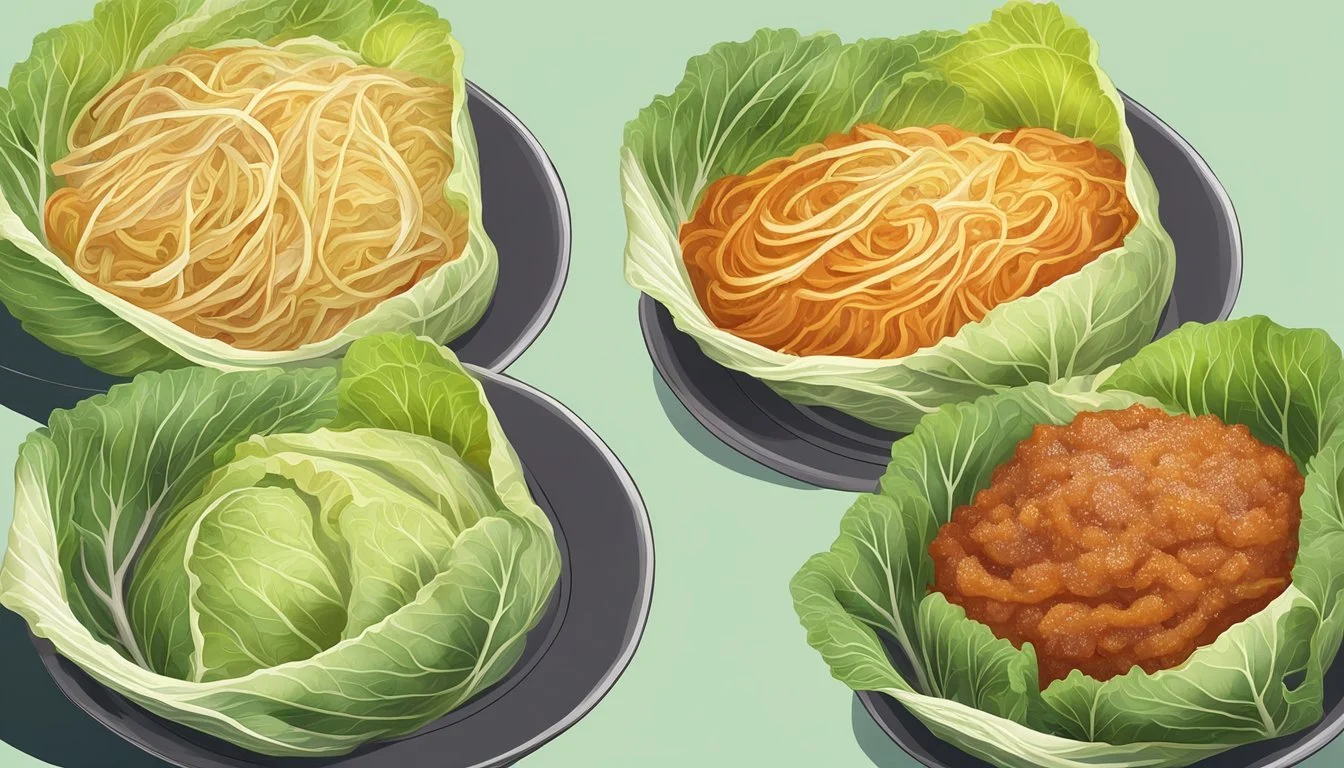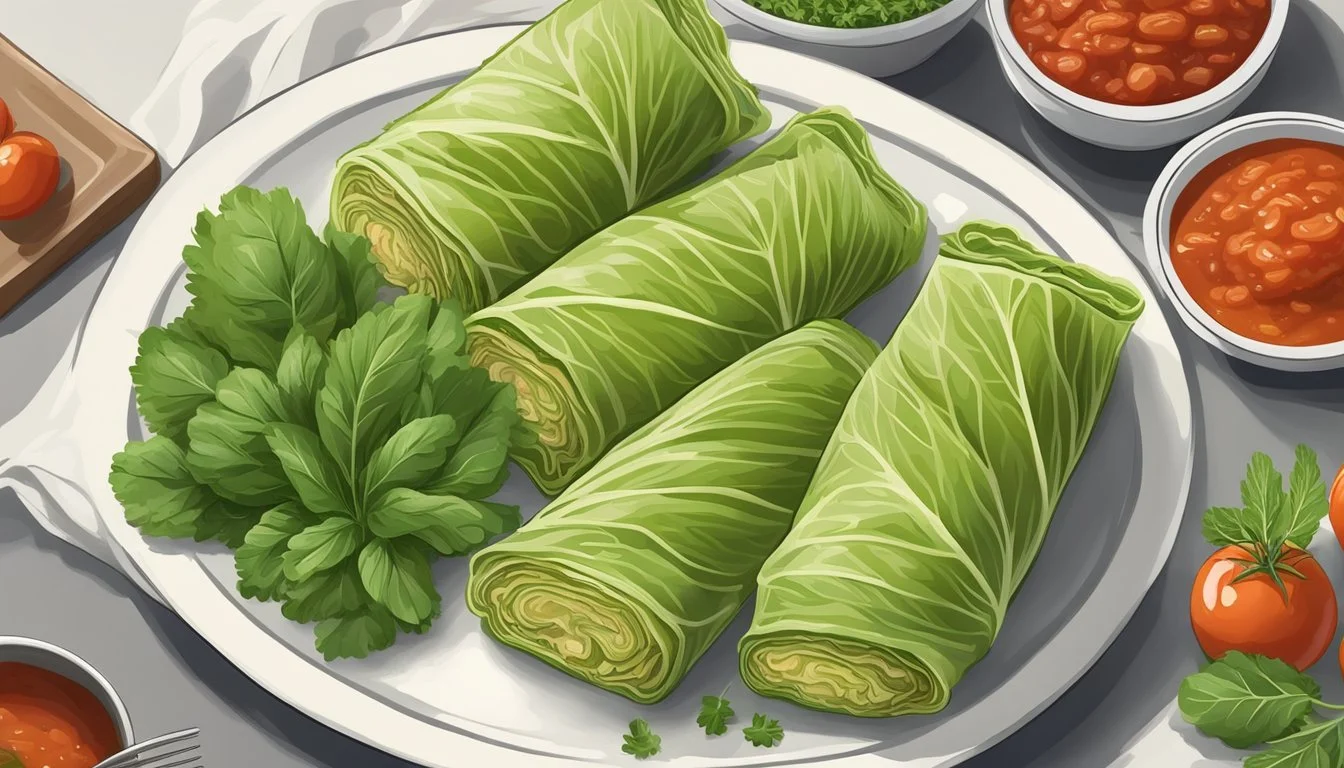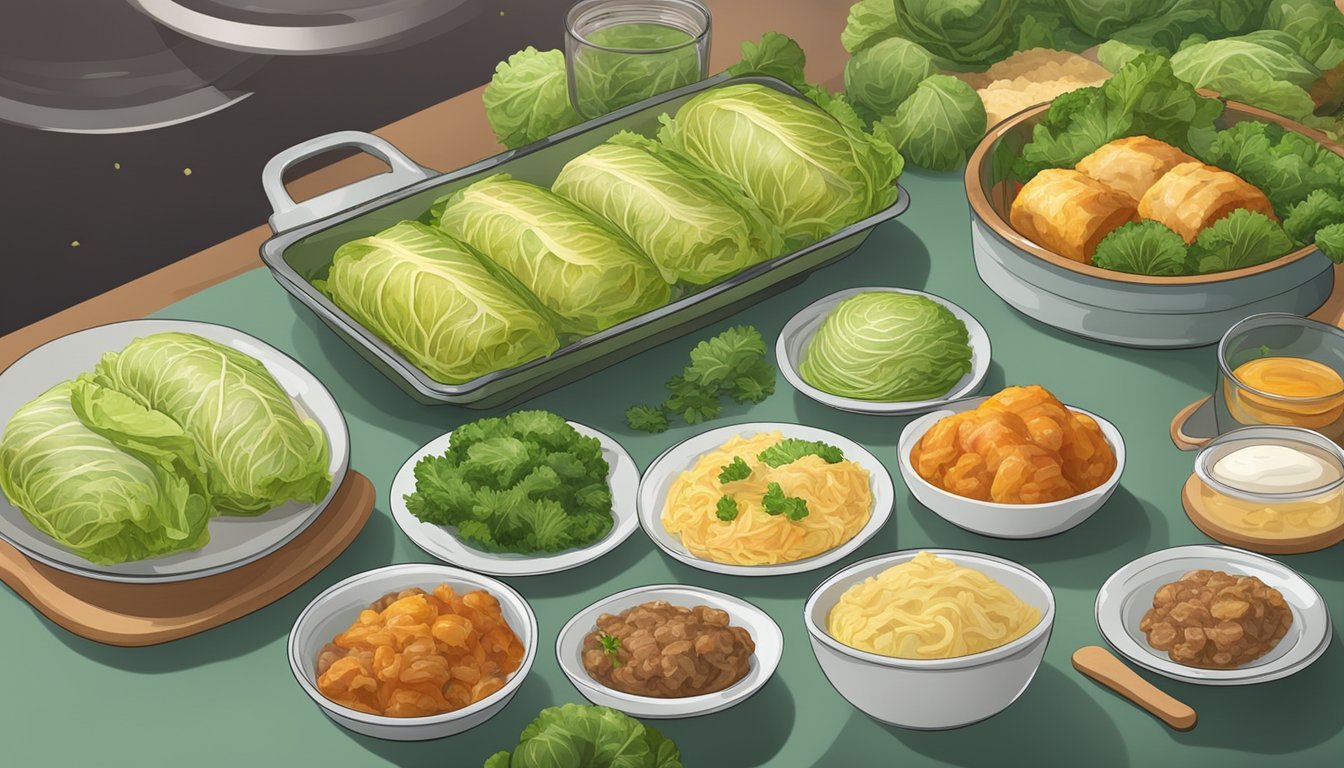How Long Do Gluten-Free Cabbage Rolls Last?
Storage Tips
Gluten-free cabbage rolls are a delicious and hearty meal that can easily be made ahead of time. Many home cooks wonder how long this dish can stay fresh, ensuring they enjoy it at its best while avoiding any potential food safety issues. Gluten-free cabbage rolls, when properly stored in an airtight container in the refrigerator, can last for up to 3-4 days.
Once cooked, it's important to allow the cabbage rolls to cool completely before placing them in the fridge. This practice not only maintains their texture but also helps in extending their shelf life. For those looking to extend their longevity even further, freezing is an excellent option. Stored properly in the freezer, gluten-free cabbage rolls can last for about 2-3 months without significant loss of flavor or texture.
Proper reheating is crucial to ensure that the cabbage rolls remain safe to eat and retain their quality. When reheating from the refrigerator, make sure they are heated through to an internal temperature of 165°F. If reheating from frozen, it's best to thaw them overnight in the fridge before reheating. This approach guarantees that your gluten-free cabbage rolls are delicious every time you enjoy them.
Understanding Gluten-Free Cabbage Rolls
This section explores the essential components of gluten-free cabbage rolls and how to identify suitable gluten-free ingredients. Key elements such as the filling, spices, and preparation steps are discussed in detail to provide a comprehensive understanding.
Components of a Cabbage Roll
Cabbage rolls mainly consist of a filling wrapped in cabbage leaves. The filling typically includes ground beef, rice or alternatives like cauliflower rice and quinoa, which are also gluten-free. Common ingredients such as onion, garlic, and parsley add flavor.
Seasonings such as salt, pepper, and spices enhance the taste. Some recipes include egg to bind the filling.
For a sauce, tomato sauce mixed with ingredients like vinegar (sometimes apple cider vinegar) is common. Extra virgin olive oil is often used for sautéing vegetables. There's also an option to make the dish dairy-free or vegan by altering the filling ingredients.
Identifying Gluten-Free Ingredients
When preparing gluten-free cabbage rolls, it's vital to ensure all ingredients are free from gluten. Cabbage, ground beef, rice, and vegetables like onion and garlic are naturally gluten-free.
Care should be taken with spices and tomato sauce to confirm they don't contain gluten-containing additives. Using extra virgin olive oil for cooking is a safe option.
For those who prefer a grain alternative, cauliflower rice and quinoa provide gluten-free substitutes. Reading labels and choosing certified gluten-free products helps maintain recipe integrity.
By carefully selecting each component and ensuring gluten-free verification, a delicious and safe cabbage roll dish can be made for those with dietary restrictions.
Preparation and Cooking Process
Creating gluten-free cabbage rolls involves multiple steps, each crucial to achieving delicious results. Proper preparation ensures the dish maintains its integrity and flavor.
Mixing the Filling
To start, prepare the filling by combining cooked rice, ground beef, and vegetables like onions and garlic. Season the mixture with salt, pepper, and any preferred herbs. Saute onions in olive oil until soft, about 5 minutes, then mix them into the meat and rice.
For additional flavor, consider adding granulated garlic and granulated onion. Stir the mixture thoroughly to ensure even distribution of ingredients. This blending process is essential for the stuffing's consistency and taste.
Boiling the Cabbage Leaves
Prepare the cabbage leaves by boiling them to soften. First, remove the core from the cabbage using a sharp knife and immerse the whole head in boiling water. Boil for about 10–15 minutes, then carefully peel off the leaves.
Immerse the leaves in cold water immediately after boiling to stop the cooking process and retain their pliability. Drain them on paper towels to remove excess water before use.
Assembling the Rolls
Lay each cabbage leaf flat and place a scoop of the filling near the narrow end. Roll up halfway, tuck in the sides, and continue to roll until fully closed.
Using this method ensures the rolls are tightly packed and won’t unroll during cooking. Place each roll seam-side down in a baking dish to keep them secure.
Baking Guidelines
Preheat the oven to 350°F. Arrange the prepared cabbage rolls in a 9x13 baking dish, ensuring they are tightly packed. This prevents them from moving and breaking apart in the oven.
Cover the baking dish with foil to retain moisture. Bake for 60–90 minutes, based on whether the rolls were assembled fresh or frozen. Cooking them covered helps to steam the rolls, making them tender and flavorful.
Serving Suggestions
Gluten-free cabbage rolls can be a versatile meal, lending themselves well to a variety of accompaniments and sauces that enhance their flavor and presentation.
Pairing with Side Dishes
Cabbage rolls pair excellently with side dishes that complement their rich and hearty nature. Steamed vegetables like green beans or carrots add both color and texture to the plate. For a more substantial meal, consider serving with mashed potatoes or a roasted potato salad.
Rice pilaf is another satisfying option that aligns well with the flavors of the cabbage rolls. A light, crisp salad, such as a Caesar salad with freshly grated Parmesan cheese and a touch of granulated garlic, provides a refreshing contrast. Consider adding a sprinkle of fresh parsley on the side for an extra touch of freshness and presentation.
Sauce and Topping Options
The right sauce can elevate your gluten-free cabbage rolls significantly. A classic choice is a tomato-based sauce made with tomato paste, onions, and a mix of granulated garlic and granulated onion. Pour the sauce over the rolls before baking for a flavorful finish.
For a different take, a light béchamel sauce can add a creamy richness. If you're looking for additional toppings, grated Parmesan cheese provides a savory umami kick. You might also sprinkle chopped parsley for a fresh, aromatic garnish. For a bit of heat, a drizzle of hot sauce or a sprinkle of chili flakes can pique the taste buds.
Storage and Shelf Life
Cabbage rolls can be stored in the refrigerator or freezer to maintain freshness. Proper storage extends the shelf life, ensuring the rolls are safe and delicious to eat.
Refrigeration Guidelines
Proper refrigeration of cabbage rolls involves placing them in airtight containers to prevent drying out and absorbing odors. They should cool to room temperature before being stored in the fridge. Directly storing hot cabbage rolls can raise the fridge’s temperature, potentially spoiling other foods.
In the fridge, cabbage rolls last between 3 to 5 days. After this period, the quality and safety decrease, and they should be discarded. Always mark the storage date on the container for easy tracking.
Freezer Storage Tips
For freezing, cabbage rolls should be individually wrapped in plastic wrap or aluminum foil, ensuring they are sealed well. This prevents freezer burn and maintains flavor.
Once wrapped, place the rolls in a heavy-duty freezer bag or airtight container. Properly stored, they can last for up to 2 to 3 months in the freezer. Labeling the bags with the date ensures they are used within the optimal period. When ready to eat, thaw them in the refrigerator overnight before reheating.
Reheating and Serving Leftovers
Properly reheating cabbage rolls is essential to maintain their texture and flavor. Below are some effective methods to reheat your gluten-free cabbage rolls, ensuring they remain moist and delicious.
Microwave Reheating Technique
To reheat cabbage rolls quickly, the microwave is a practical option. Place the cabbage rolls in a microwave-safe dish, adding a spoonful of broth or sauce to keep them from drying out.
Cover the dish with a microwave-safe lid or plastic wrap, leaving a small vent.
Microwave on medium-high heat for 3-4 minutes.
Check the internal temperature; if needed, reheat in 1-minute intervals until thoroughly heated.
For best results, turn the rolls halfway through to ensure even heating. Serve immediately.
Oven Heating Instructions
Reheating in the oven takes longer but often yields better results. Preheat your oven to 350°F (175°C).
Place cabbage rolls in a baking dish and cover with extra sauce or broth.
Cover the baking dish with foil to create steam, which helps keep the rolls moist.
Bake for 30-45 minutes or until thoroughly heated, checking every 10 minutes after the initial 30 minutes.
Use a thermometer to ensure the internal temperature reaches at least 165°F (74°C). This method is ideal when reheating larger quantities or if you prefer a more even heat distribution. Serve the rolls warm, optionally garnished with fresh parsley for added color and flavor.
Nutritional Information
Gluten-free cabbage rolls are not only delicious but also come with a good nutritional profile. They often incorporate lean ground beef, green cabbage, and various spices, which make them a nourishing option for meals.
Health Benefits of Gluten-Free Meals
Lean Ground Beef: Using lean ground beef in cabbage rolls contributes to a high protein content with less saturated fat, supporting muscle growth and maintenance.
Green Cabbage: This vegetable is packed with vitamins C and K, fiber, and antioxidants, promoting immune health and digestion.
Spices and Herbs: Ingredients like basil and granulated garlic add flavor without extra calories or gluten, contributing to cardiovascular health and overall wellness.
Olive Oil: Extra virgin olive oil provides healthy monounsaturated fats, which are beneficial for heart health when used in moderation.
Gluten-free cabbage rolls can also cater to different dietary preferences, including vegan, pork, chicken, and turkey variations, allowing flexibility in nutritional content while maintaining the meal's gluten-free status.
Variations of the Classic Recipe
Exploring different ways to enjoy gluten-free cabbage rolls can be exciting. Whether you're looking to switch up the filling, make a vegan option, or try new seasoning combinations, there are many possibilities to enhance this beloved dish.
Alternative Fillings and Grains
Experimenting with different fillings can introduce new textures and flavors. Cauliflower rice and quinoa are excellent substitutes for traditional rice, providing a unique twist while keeping the dish gluten-free.
Various meats such as turkey or pork can replace beef for a lighter or richer taste. Vegetables like bell peppers, carrots, or zucchini can be added for extra nutrients and flavor.
Here's a simple list of alternative fillings:
Cauliflower rice
Quinoa
Ground turkey
Ground pork
Mixed vegetables (bell peppers, carrots, zucchini)
Creating a Vegan Cabbage Roll
For a vegan version of cabbage rolls, use hearty plant-based ingredients to achieve satisfying textures and rich flavors. Lentils, black beans, or a mixture of finely chopped mushrooms can substitute meat, adding protein and depth to the rolls.
You can also use cauliflower rice or quinoa instead of traditional rice. Bind the ingredients together with a mix of tomato paste and your favorite vegetable stock.
Here are some key components for vegan cabbage rolls:
Lentils or black beans
Mushrooms
Tomato paste
Vegetable stock
Seasoning and Spice Mixes
Seasonings play a crucial role in enhancing the flavors of cabbage rolls. Traditional spices like black pepper, cumin, and nutmeg can elevate your dish. For a bolder taste, consider adding smoked paprika, garlic powder, and ground coriander.
Spice blends can be customized according to your preference. A combination of ground black pepper, cumin, and nutmeg adds warmth and depth to the dish.
A sample spice mix might include:
1 tsp ground black pepper
1 tsp ground cumin
1/2 tsp ground nutmeg
1 tsp garlic powder
1 tsp smoked paprika
By experimenting with these variations, you can create cabbage rolls that cater to different dietary needs and flavor preferences while keeping them gluten-free and delicious.









